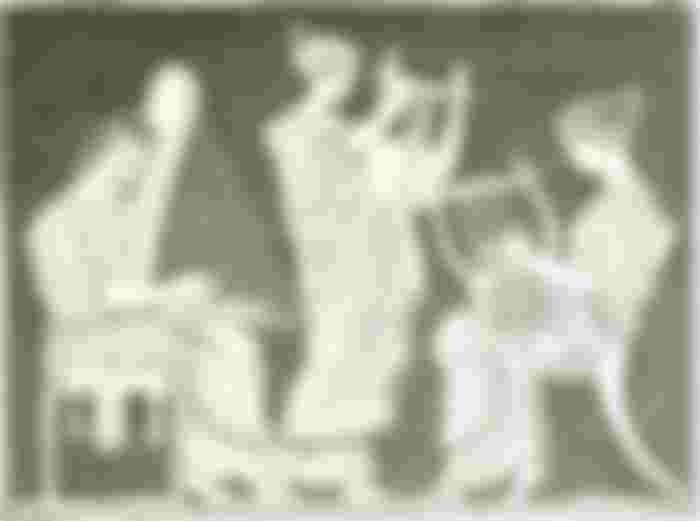Modal Music Explained

“DO RE MI FA SOL LA TI DO” (sung ascending)
“DO TI LA SOL FA MI RE DO“ (sung descending)
In much music, the “DO” note is placed at the top and bottom of the seven-note scale from which are derived the basic notes of melody and harmony of a song, or of a section of a larger work.
Modal composition simply repositions the same scale, allowing one of the other tones to receive all the glory and attention usually accorded the “DO” note by putting this tone at the top and bottom of the scale. E.g., by placing the scale so that the “RE” pitch lands at both ends:
“RE MI FA SOL LA TI DO RE” (sung or played ascending)
“RE DO TI LA SOL FA MI RE“ (sung or played descending)
You will notice that it is still the same set of seven notes; all that is changed is the final, or “bookends,“ the resting point of melody, harmony and rhythmic emphasis. In modern terminology, this tone would be called the “Tonic” or “key note” of the music.
Theoretically, since there are seven basic pitches in this ladder of tones, a mode may be derived from any one of the seven:
“MI FA SOL LA TI DO RE MI,” etc. Or, “FA SOL LA TI DO RE MI FA,” and so forth.
Music educators and composers, through the course of the past two millennia, have developed systems of effectively classifying these seven modes. Often, various ancient Greek names are used to classify and label the seven possible modes, so the historical roots of modal composition go very deep. To illustrate:
The “DO” mode is also called Ionian. This closely resembles the familiar Major scale. Continuing,
“RE,” Dorian, is still popular among knowledgable modern jazz musicians,
“MI,” Phrygian, also familiar,
“FA,” Lydian,
“SOL,” Mixolydian,
“LA,” Aeolian. From this mode is derived the modern “Minor” scale, though it is handled in a slightly different manner. And lastly,
“TI,” Locrian. This mode is hardly found in ancient music, so is mainly theoretical. Locrian is based on the “leading tone” and for harmonic reasons – lack of a dominant tone - is not very common even in modern music.
Furthermore, each mode may be described subjectively as having unique musical characteristics, exhibiting varying levels of “brightness” in mood. The progressively “brighter” modes are the Mixolydian, Ionian, and Lydian. Those with successively “darker” effect are the Dorian, Aeolian, Phrygian, and Locrian modes. These characteristics can be and are exploited effectively by composers.
In both formal and informal settings, hearing is believing. For some examples, listen to the evil or “Dark Side” themes used by composer John Williams in the various Star Wars films, or the “shark motif” of Jaws (Phrygian, one of the darkest modes). Then note the opening of the slow second movement of Johannes Brahms’ Third Symphony (also Phrygian). Lydian, the “brightest“ of the modes, is used in the musical motif of The Jetsons, a futuristic television cartoon series, the Back to the Future films’ main title theme, and also in the Shepherd’s Song at the opening of Act III of Puccini’s opera, Tosca.
The musical characteristics of these modes is due in part to the relationship between the tonic of the mode and all the other tones. Especially is this true in relation to the “Dominant” or fifth step of each modal ladder.
The word “dominant” contains the element “dom” which goes back to ancient Latin roots, words such as “dominus” “dominate”, meaning lord, master. The aristocratic prefixes “Don” and “Donna” also come from the same origin. Recall the literary characters and legends of Don Carlos, Don Juan, Don Quixote, et al. With the exception of the theoretical Locrian, the fifth step or degree of each mode is the dominant.
Finally, the consecutive steps or degrees of each modal ladder are at calculable distances from each other, either a whole tone or whole step apart, or a half step apart (called a semi-tone). For example, in the Dorian mode, the semi-tones are between the second and third degrees of that mode, and also between the sixth and seventh degrees. Whereas in the Phrygian, there are half steps between the Tonic and second degree, and also between the Dominant (Fifth) and sixth degrees. The position of the half steps really influences the emotional affect of music composed in each mode.
So, in this short write up, we touched on some of the main characteristics of the so-called “Greek” modes, though they are found in music of many different different cultures in the world, and still used today. Whether Dorian, Phrygian, Lydian, Mixolydian, Aeolian, or Ionian (even Locrian!) mode, with practice and listening, we will be better able to identify their individual modal qualities in the music in our environment.
That said, music theories such as this do help us to describe and analyze various musical characteristics, and eventually associate them with sound qualities – what we are hearing in actual music based on diverse modes – but these theoretical concepts are not “rules” or commands dictating to us how we ought to write our own compositions! We learn by doing, so the reader is advised to practice playing each of the seven modes on a piano keyboard, then listen for examples of each mode in the folk songs, traditional music, and even in classical music composers; as alluded to above, even Ludwig van Beethoven and Johannes Brahms were known to incorporate specific modes in their greatest musical works. So, why not us today!
IMAGE CREDITS: All images of ancient Greek instruments shown in this essay were free and in the Public Domain (searchable and downloadable from Flickr.com and the Internet Archive site). Commercial use is permitted.



You should have a music school or at least a small cottage where you can guide people on music. Your lessons right here are just comprehensive and straight to the point.